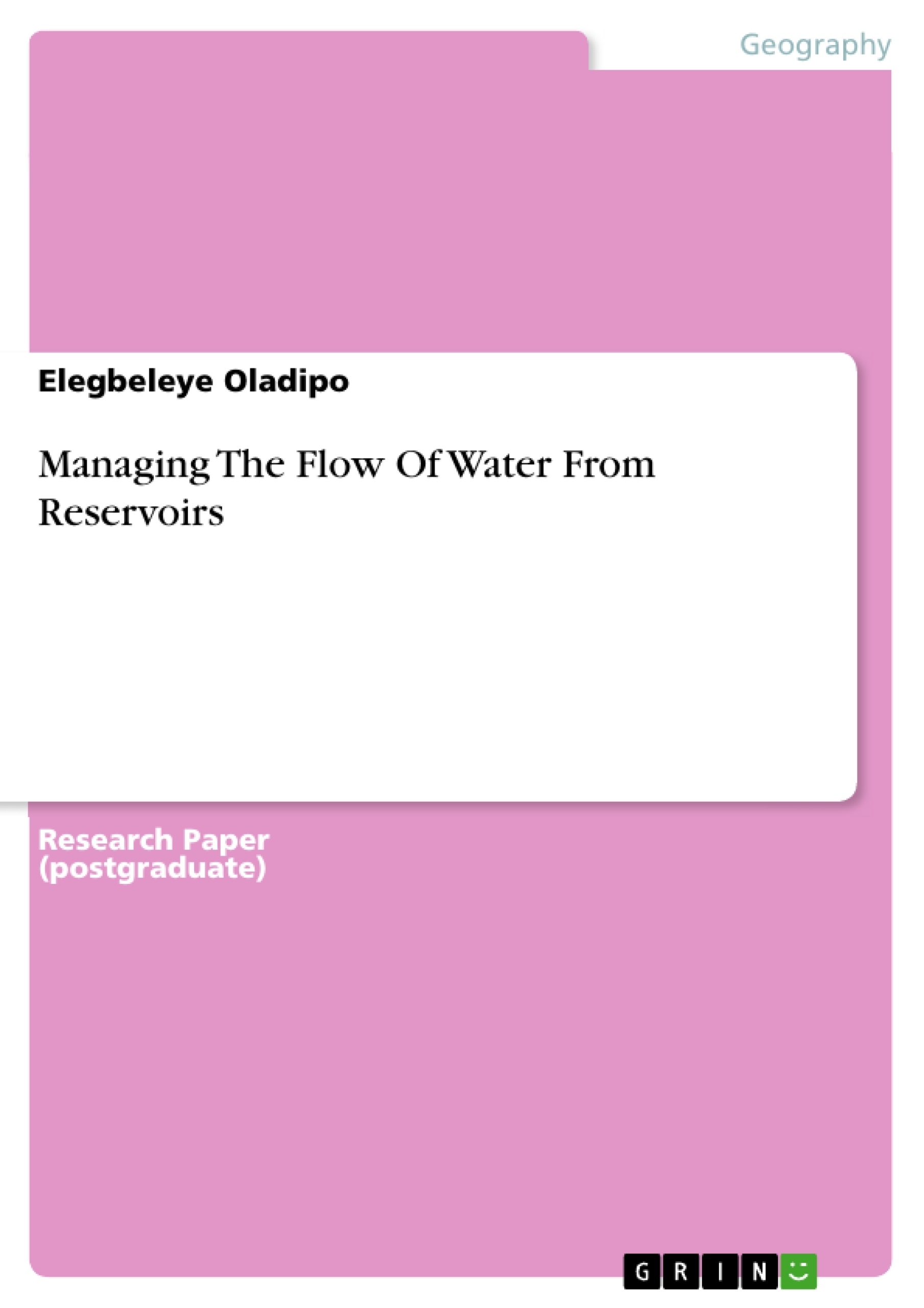Reservoirs have been since the earliest civilisation, being part of man kind strategy for survival. These water storage facilities have been created since time immemorial mainly by constructing dams accross rivers and are intended both for capturing water that would otherwise proceed down river towards the oceans or lakes as well as for storing the water for as long as possible, till when needed and used.
Sediments which is naturaly released from the catchment areas into the reservoir via contributing stream is impeded by the water bodies in the reservoir which are retained by the dams and to a large extent the sediments is permanently trapped there in. This paper talks about managing the flow of reservoirs and regulated river or dam and how to improve its sustainability by balancing the needs of the society, the economy, the environment and the ecosystems. Likewise its environmental goals, its role on a global scale with the laws and regulations guiding it are also discussed in this paper.
Contents
1 INTRODUCTION
1.1 Management Of Reservoirs And Their Environmental Goals
2 EUTROPHICATION
2.1 Estimating Ecosystem Flow Requirements
2.2 The Role Of Water Evaluation In Addressing Global Environmental Flow Requirements (Efrs)
3 MAJOR EFFECTS AND CONSEQUENCES OF BUILDING LARGE DAMS AND RESERVOIRS
3.1 Laws And Regulations For Reserviors
3.2 How Reservoirs Are Controlled Or Regulated
4 DESILTING RESERVOIRS
4.1 Identifying Incompatibilities Between Human And Ecosystem Needs
5 CONCLUSION
6 REFERENCES
6.1 Internet Sources
- Citar trabajo
- Elegbeleye Oladipo (Autor), 2016, Managing The Flow Of Water From Reservoirs, Múnich, GRIN Verlag, https://www.grin.com/document/313731
-

-

-

-
¡Carge sus propios textos! Gane dinero y un iPhone X. -

-
¡Carge sus propios textos! Gane dinero y un iPhone X. -

-
¡Carge sus propios textos! Gane dinero y un iPhone X. -

-
¡Carge sus propios textos! Gane dinero y un iPhone X. -

-
¡Carge sus propios textos! Gane dinero y un iPhone X. -

-
¡Carge sus propios textos! Gane dinero y un iPhone X.

